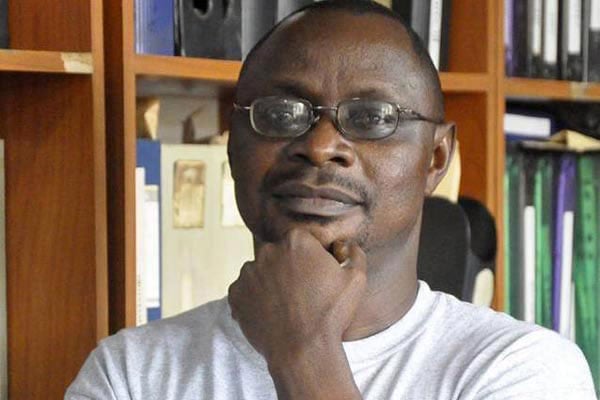Prime
Story of a lion, wars, Rwanda, South Sudan and Kigezi

Author: Charles Onyango Obbo. PHOTO/FILE
What you need to know:
- At the same time, there is a growing land grab in the north by powerful elites and business interests from Kampala.
As the Uganda media reported, on April 8, 2022, a stray lion that had spent days killing and eating people’s livestock in several villages in the western Uganda district of Kagadi was shot dead by soldiers of the Uganda Peoples Defence Forces (UPDF).
The agitated villagers overwhelmed the soldiers, seized the carcass, skinned it, and jostled over the meat.
The soldiers and the wildlife authority wanted to carry the carcass to “investigate”.
Those who pay attention to these things now say that if the villagers consumed the lion’s meat, then, they ate something several times bigger than the lion.
One root of the story is to be found in the northern Uganda war. The war lasted nearly 20 years, from early 1987 to 2006. Anything between 100,000 and 500,000 people are estimated to have been killed. In March 2006, a Civil Society Organisations for Peace in Northern Uganda (CSOPNU) report said 146 people perished each week in the region in war-related deaths. Some 1.8 million people were displaced and tens of thousands were kidnapped, or mutilated.
That disaster, though, was salvation for wildlife. During that period, western Uganda – especially the Kigezi region - experienced an economic boom that exacerbated its climate change stress, and resulted in a demographic upheaval. With the Rwanda war and the 1994 genocide against the Tutsi, production collapsed.
Kigezi and Ankole became Rwanda’s breadbasket, but Kigezi’s hillsides were fragile from exploitation for agriculture, and the increased pressure battered the land further and forced thousands more Bakiga to join the migration to Bunyoro. At the same time, many people fleeing the war in the north were also moving to Bunyoro, where Kagadi is.
Bunyoro is home to Murchison Falls National Park. It is Uganda’s oldest and largest national park. There was a haphazard settlement by migrants and IDPs in some areas near the park or other ungazetted wildlife sanctuaries in Bunyoro. The animals took flight to a paradise that had developed in the north.
With millions of people fleeing war, their lands grew lush, wells filled up, and the animals were spoilt for choice which food-filled jungle out of the way of Joseph Kony’s Lord’s Resistance Army rebels, to live in.
For the animals, though, it was a second migration of sorts. The Luweero war and the area’s depopulation and resulting rewilding had opened some nooks for the more adventurous animals. With the NRM coming to power and the end of the war in Luweero, the people took it back. The party ended for the animals.
Then the long northern feast also ended. The guns fell silent. Joseph Kony and his LRA were pushed to South Sudan, then on to the Democratic Republic of Congo, and eventually the Central African Republic.
The people in the north started to return to their homes and reopen their fields for agriculture as birth rates soared in the Acholi and Lango regions. And, as happened with the west during and immediately after the Rwanda war, South Sudan, especially its semi-autonomy, and then independence in July 2011, led to an explosion of demand for food and other goods from northern Uganda. The region started an economic boom that has not really died out yet.
In 2013, everything went belly up in South Sudan and it returned to war. That conflict has sent nearly one million South Sudanese refugees to Uganda.
At the same time, there is a growing land grab in the north by powerful elites and business interests from Kampala.
The resettlement, post-conflict recovery, South Sudanese demand and refugees, and the land grab, have exerted tremendous pressure on the “safe havens” wildlife had found in the north during the war. Now, they are on the run again.
One of the results is that in large secure lands in the region owned by individuals, IDP animals are forming mini sanctuaries.
Looking ahead, this could require a whole new approach and laws about what is a national park, who owns wildlife, and who can make money off wildlife tourism.
However, many of the animals are roaming, increasing human-wildlife conflict. That April 8 spectacle in Kagadi, might just be the beginning. Indeed, recent years have been marked by an increase in such incidents.
ALSO READ: What does DR Congo joining EAC mean?
However, to imagine that the fate of a lion in Kagadi in 2022 would open a window into the Rwanda war that started in 1990; the bloody war in the north; the environmental and population crises in Kigezi; the migration to Bunyoro; the independence and second war in South Sudan with its attendant refugee crisis; the recovery of the north; and the great Northern Uganda Land Grab, is truly mind-blowing.
It makes it almost impossible to look at Murchison Falls National Park the same way again. One wonders what the animals have learnt in all this. Perhaps, that they can’t rely on humans for their lunch?
Mr Onyango-Obbo is a journalist, writer and curator of the “Wall of Great Africans”. Twitter@cobbo3





